
Residents of two buildings in the Stepa Stepanović residential complex in Belgrade can check on a mobile application and website how much energy they consume and how much it costs, whether their consumption increases or decreases in relation to regular consumption, but also to compare their spending on energy in various time periods. This data, whose purpose is to make residents aware that they can save energy by simply changing their behavior, is being provided under the Modeling Optimization of Energy Efficiency in Buildings for Urban Sustainability” (MOEEBIUS) project, funded by the European Union through the EU Horizon 2020 program.
MOEEBIUS is being implemented in the United Kingdom, Portugal and Serbia by 15 partners representing research institutions, ESCOs, SMEs, universities, and public institutions from 10 countries. Participants from Serbia are public heating utility Beogradske Elektrane, with Bojan Bogdanović as project leader and operational manager of engineering and Radmilo Savić as executive director for business and technical support, as well as IT company Belit – Belgrade Information Technologies.
The performance gap between projected and achieved effects of energy efficiency measures
With the increasing demand for more energy efficient buildings, the construction and energy services industries are faced with the challenge to ensure that the energy performance and savings projected while designing energy efficiency measures are actually achieved during operation. In the event that the predicted investment effects differ significantly from those achieved, this leads to a high risk, potential financial losses for some or all of the parties in the EPC (Energy Performance Contracting), and to an adverse effect on the entire ESCO market.

The obstacles that need to be overcome are:
- The wide gap between projected and actual energy consumption.
- The untapped potential for energy savings – primarily the behavior of facility users.
- Difficulties in planning and monitoring energy consumption and system maintenance.
- Shortcomings of modeling techniques in representing the real use and operation of buildings.
- The inability of the existing graphical system (CAD) to represent the complexity of actual buildings.
- Changes in buildings during their lifespan.
- The inefficient building management strategies and maintenance.
- Losses in equipment performance.
Implementation – London, Mafra, Belgrade
The project is being implemented in London (United Kingdom), Mafra (Portugal) and Belgrade (Serbia) over a period of 40 months. The implementation started in November 2015 and ends in April 2019.
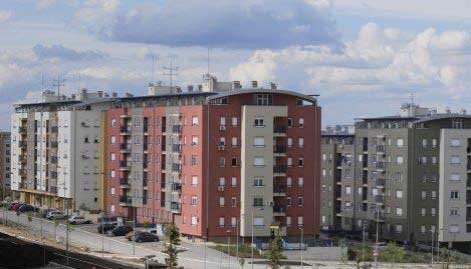
In Belgrade, 48 buildings were selected and connected to the district heating system managed by Beogradske Elektrane, with their 12,000 occupants making the pilot site by far the largest within the MOEEBIUS project. Most buildings of the pilot site are 44 buildings situated in the Stepa Stepanović complex, two primary schools – “Dragan Lukič” (Bežanijska kosa) and “Danilo Kiš” (Stepa Stepanović), kindergarten “The Little Mermaid” (Stepa Stepanović), and the management building of Beogradske Elektrane in the Novi Beograd district.
A holistic framework for optimizing energy performance as a solution
MOEEBIUS introduces a Holistic Energy Performance Optimization Framework that enhances current modelling approaches and delivers innovative simulation tools which:
- deeply grasp and describe real-life building operation complexities in accurate simulation predictions that significantly reduce the “performance gap” and,
- enhance multi-fold, continuous optimization of building energy performance as a means to further mitigate and reduce the identified “performance gap” in real-time or through retrofitting.

Benefits of this solution:
- Applicable to all types of buildings (residential, public, business, …).
- Applicable for all types of energy supply (district heating, gas …).
- Improves planning, delivery optimization, efficiency of operation.
- Secures planning and management at building level and at the level of entire areas (priority – district heating network).
- Reduction of the performance gap between the projected and actually delivered energy.
- Real time optimization.
- Improved retrofitting and energy efficiency investment decision-making.
Serbia – application of the ESCO model with the development of mobile applications and internet portals
MOEEBIUS enables the development of different business models in two areas: ESCO – energy services company and demand response.
In Serbia, the ESCO model has been applied and tested, based exclusively on raising awareness and training users as a method to accomplish energy savings. Awareness raising and the role of users in achieving the set savings targets are a key and integral part of all EPC contracts based on the sharing of savings between ESCO companies and the owners of buildings which are subject of energy recovery. Due to the significant share that is not easy to predict, it is necessary to look at the possibilities of achieving savings solely through measures for raising awareness and strengthening the capacity of users to achieve savings.
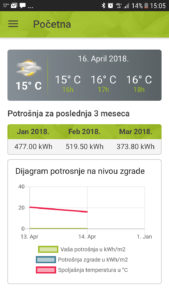
In most cases, users of the facilities are not fully aware of this potential, nor are they trained in the use of the metering equipment available to them. They have no insight into their own consumption, and cannot identify the relation between their behavior and the amount on their heating bill. Also, most of them are unaware of the great impact that internal energy gains (the operation of electrical appliances, the heat emitted by people, solar radiation, etc.), the duration and method of room ventilation, gains and losses of heat to the neighboring apartments, and average outdoor temperatures have on their heating bills.
Measures to achieve savings through raising awareness of users require very little investment and therefore constitute a mandatory part of all EPCs, but they also allow the possibility to be applied on their own. Measures:
- The appropriate and advanced use of existing regulating equipment;
- The possibility to install new regulating equipment – measures requiring no investment (e.g. programmable or remote-controlled room thermostats);
- A detailed, timely, and frequent enough insight into consumption data and energy bills;
– Using more suitable tariff schemes. - A gamification framework that will raise occupants’ awareness about EE and ensure high level of fulfilment on EPCs.
There are different methods to achieve energy savings by increasing end users’ awareness, for example:
- Training and following instructions on how to achieve improvements;
- Learning from direct assessments of the impact of behavior change on savings achieved through behavioral triggering based on detailed evaluation of consumption data;
- Learning through comparison with other end users (e.g., neighbors);
- Learning the most effective ways to use existing measuring and control equipment.
- In order to provide an innovative way to communicate and provide information to users, a mobile application and website have been developed and made available to all users in two buildings at Stepa Stepanović. In this way, at any time, users can receive required information on their computers, tablets, or mobile phones relating to:
- The delivered heat in kWh and the amount in RSD at the daily level for any selected previous period (from date to date, week, month, year)
- The specific consumption of kWh per degree Celsius and RSD per degree Celsius reduced to one degree Celsius of temperature difference so that the user can compare his bills and system management at different periods with different outside temperatures for any selected previous period (from date to date, week, month, year)
- The comparison of consumption (kWh/m2) with the average benchmark building
- Regular notifications via mobile devices if the user consumes more/less than his usual consumption. Within the notice, the user receives information on the amount of his specific consumption in the previous period, how much higher or lower it is in the referred period, and by how much the bill will be higher or lower if he continues with such behavior and energy consumption
- Advice on savings options, how to use available equipment, advice related to equipment maintenance, and answers to other frequently asked questions:
- Brief and important information on the front page without the need to select more detailed options: outdoor temperatures on site and forecast for the next 3 hours, the delivered amount of heat in the previous 3 months, and a diagram with data for the previous 3 days containing average outdoor temperatures, the specific consumption of the apartment, and comparison with the specific consumption of the building used as a benchmark.
Project results in Serbia – remote-controlled heating
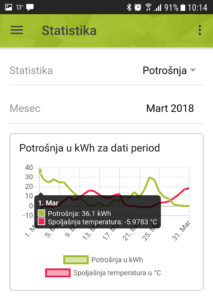
In the upcoming period, an upgrade of the system and mobile application and website is planned, with the options to control heating remotely and measure comfort parameters in the apartments (temperature, humidity, CO2 percentage, brightness), but also to track the key equipment in the heat substation and the correlation between the parameters of the substation and the heating in the apartments.
In order to achieve the other goals of the Project, the 3D modeling of the Stepa Stepanović complex has been carried out, along with the creation of numerical models of parts of the system at the Voždovac heating plant, from the distribution network to all buildings in the residential complex and individual apartments in two buildings.
The significant result of the project in Serbia is the exploration of possibilities of:
- Providing users with fast, clear, and easy, always available insight into their own consumption and the cost of the energy used for heating.
- Enabling users to learn, train, and make progress in their behavior and demand response.
- Allowing users to compare with their neighbors and share ideas about savings opportunities.
- Enabling remote monitoring of comfort conditions in the apartment and control of the heating system.
- Enabling ESCO firms to calculate more accurately the savings achieved by raising awareness and educating users about ways to save energy, which reduces the risk of poor EPC contracts and enables development in this area in Serbia
- Improvements in modeling of buildings and district heating systems, which secures the optimization and planning of work parameters.






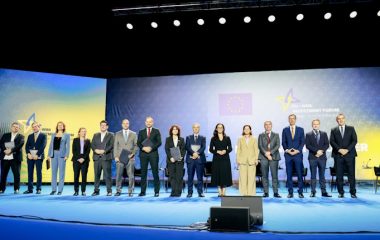
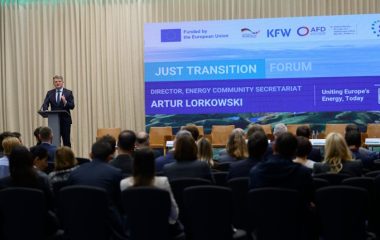
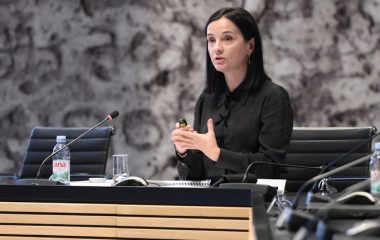
Be the first one to comment on this article.